Golden crispy perfection! Have a bite of this amazing Galaktoboureko and let its delicious syrup flow in your mouth! Galaktoboureko is a traditional Greek dessert made with layers of golden brown crispy phyllo, sprinkled with melted butter, filled with the most creamy custard and bathed in scented syrup.. Simply amazing!
After a lot of experimenting, we have distilled the essence of this delightful traditional Greek dish to a few easy to follow steps and recipe for you to make the very best Galaktoboureko on your first try! So, go ahead, read on to discover how to recreate this traditional sweet delight from scratch!
All the secrets to make the perfect homemade Galaktoboureko the traditional Greek way
This easy to follow Galaktoboureko recipe is made in three key stages: Preparing and layering the phyllo sheets the right way, Preparing the creamy custard filling and Preparing the scented syrup.
So lets start with preparing the phyllo! Firstly, use the right butter! To get the most flavourful Galaktoboureko use a good quality fresh butter to cover the phyllo sheets. The authentic Greek Galaktoboureko recipe calls for ‘galaktos’ butter made from a mix of sheep’s and cow’s milk, but if you can’t handle it’s very strong flavour or simply can’t find it at your local store, then you can substitute with good quality fresh butter from cow’s milk.
Secondly a little trick to make the phyllo crispier and flakier is to sprinkle the melted butter over the phyllo sheets, rather than brushing them. I always use that trick when preparing phyllo based desserts, like this Galaktoboureko recipe and baklava!.
Be quick! Working with phyllo can be tricky as it is brittle and can dry out very quickly. So make sure you check out my phyllo handling tips before start preparing this Galaktoboureko recipe!
Clarified butter! Sometimes when baking the galaktoboureko some black spots will appear on the top. These are the milk solids caramelising in the oven. If you want to avoid that then just use clarified butter or ghee.
Prepare the Galaktoboureko custard
Traditionally, Greek Galaktoboureko uses use thin semolina to achieve the grainy texture that is the main characteristic of the cream. So don’t be alarmed if it is a bit grainy, this is intentional and will result in an amazing texture when you cut through it. So how to make your custard to perfection?
Make your egg whites to meringues and fold them in the galaktoboureko custard mixture. In most recipes, the eggs are added whole towards the end, but with this Galaktoboureko recipe the eggs are beaten into meringues and combined in the semolina based cream. This is the secret to a more fluffy and creamy custard and to avoid the egg-y smell, which can ruin the flavour of your Galaktoboureko.
Add the semolina slowly to the warm milk and whisk constantly to prevent it from forming lumps!
Make sure the mixture is cool when folding in your meringues so they don’t curdle. When preparing your custard you will be heating up your milk, sugar, vanilla and semolina to get the ingredients to combine and form a cream. Before folding in the meringues make sure the custard mixture has cooled down to 50C/120F or until warm to touch else your eggs may curdle!
Use some good quality cream! There are two ways to make galaktoboureko – some recipes call for full fat milk only and others a mix of cream and milk. After plenty of experimenting I’ve found that the best custard texture and flavour comes from using a good quality double/heavy (35%+ in fat) cream. This will make your custard filling silky smooth and will taste simply divine!
Prepare the syrup for the Galaktoboureko
To achieve the perfect syrup consistency for your Galaktoboureko, you should never blend or stir the syrup while it is boiling. Just let the sugar dissolve in the boiling water, remove it from the stove and then add your honey. Honey helps the syrup not to crystallise, gives extra flavour and makes it nice and thick.
To achieve the perfect Galaktoboureko you want your phyllo to remain crispy while all the syrup has soaked through. To accomplish this make sure that the syrup is cold and your Galaktoboureko is really hot. So prepare your syrup first to give it plenty of time to cool down! Also laddle the cold syrup slowly over the hot Galaktoboureko and wait for each ladle to be absorbed fully. That way the syrup is absorbed evenly and throughout your filling.
Finally, I know, even though it will be really hard to do, you should wait for the Galaktoboureko to cool down before cutting into it! Make sure you don’t cover the galaktoboureko while it is still warm to prevent the steam from getting trapped. Steam will turn your phyllo soggy! Just leave it uncovered on the counter for an hour or so until its cool to the touch.
So go ahead, give this traditional Galaktoboureko recipe a try and amaze your friends and family!
Similar recipes to try
If you love a traditional syrupy greek desert, the below recipes are made for you! Enjoy!
- Baklava Cheesecake
- Chocolate Baklava
- Traditional Greek Baklava Recipe with Walnuts and Honey
- Greek baklava rolls recipe (Saragli)
- Chocolate Souffle in Baklava Pouches recipe
- Galaktoboureko with Kataifi (Greek Custard and shredded phyllo pie)
- Homemade Kataifi recipe
- Greek Ekmek Kataifi recipe (Custard and whipped cream pastry with syrup)
- Greek Yogurt Cake Soaked in Syrup Recipe (Yiaourtopita)
- Karidopita/Karithopita recipe (Greek Walnut Cake with Syrup)
- Greek Ravani / Revani recipe (Coconut cake with syrup)
- Loukoumades recipe (Greek Donuts with Honey and Walnuts)
- Orange cake with syrup – Portokalopita
- Samali – Semolina cake with mastic syrup
- Greek Honey cake (Melopita Sifnos)

Traditional Greek Galaktoboureko recipe (Greek Custard Pie with Syrup)
- Prep Time: 60 minutes
- Cook Time: 60 minutes
- Total Time: 2 hours
- Yield: 10-12 pieces 1x
- Category: Dessert
- Method: Baked
- Cuisine: Greek
Description
Golden, crispy and extra syrupy. A no fuss, three step Galaktoboureko recipe to make the best traditional Greek custard pie on your first try!
Ingredients
Base Ingredients
- 450g phyllo pastry (14 oz./ 12 sheets)
- 230g butter (8 oz.)
For the Custard
- 160g finely ground (thin) semolina (6 oz.)
- 220g sugar (7.5 oz.)
- 500g milk (17.6 oz.)
- 4 eggs (separated into whites and yolks)
- 30g butter (1 oz.)
- 1 tsp vanilla extract
- 500g double (heavy) cream (17.6 oz)
For the Syrup
- 325g water (11.4 ounces)
- 575g sugar (20.2 ounces)
- 1 large tbsp honey
- peel of 1 lemon
- a cinnamon stick
- 10 drops of the lemon juice
Instructions
- To make this Galaktoboureko recipe, start by preparing the syrup. Into a small pan add the sugar, the water and lemon peel, cinammon stick and lemon and bring to the boil. Let it boil just until the sugar has dissolved. Remove the pan from the stove, add the honey and stir. Leave the syrup aside to cool completely.
- Prepare the custard for the Galaktoboureko (steps 3-8).
- Pour into a saucepan the milk, the cream and 120g of the sugar, and bring to the boil. (Don’t whisk the mixture. The sugar at the bottom of the pan protects the milk from burning.) As soon as it comes to the boil and heats up slowly add the semolina and the vanilla extract, whilst whisking. Turn the heat down to medium heat and whisk constantly until the mixture becomes creamy. Remove the pan from the stove, add a knob of butter and fold. Let it cool down while you are preparing the remaining steps, until warm (50c / 120F), else your mix will curdle when you fold in the eggs. Just remember to whisk it once in a while.
- Divide the eggs into yolks and whites. In most traditional Greek recipes, the eggs are added whole towards the end, but with this Galaktoboureko recipe the eggs are beaten into meringues and combined in the semolina based cream. This is the secret to a more fluffy and creamy custard and to avoid the egg-y smell, which can ruin the flavour of your Galaktoboureko.
- Place the egg whites and 50g sugar in a mixing bowl. Make sure your egg whites, bowl and whisk attachment/s are free of any water. Use an electric mixer or electric hand beaters to whisk the egg whites and sugar until the mixture is very thick and glossy, all the sugar has dissolved and a long trailing peak forms when the whisk is lifted (meringues). Set aside.
- In another bowl, whisk the yolks and 50g of sugar, until the mixture is thick and foamy. This should take about 5 minutes.
- With a spatula add 1/4 of the meringues into the egg yolks-sugar mixture and blend with light circular movement from the bottom up. Gradually add all the meringues into the mixture and fold.
- Fold together the two mixtures, from step 3 and step 7 and set aside.
- For this Galaktoboureko recipe, you need a large baking tray, approx. 25x32cm. Melt 230g of butter (low heat) and butter the bottom and sides of the tray. Remove the phyllo roll from the plastic sleeve. You will use 6 sheets of phyllo for the bottom of the Galaktoboureko.
- Begin by layering the sheets one by one on the bottom of the tray, making sure to sprinkle each one thoroughly with melted butter. Layer four sheets of phyllo so that they extend half in the pan and half out of the pan horizontally and vertically and two more in the middle.
- Tip in the custard, smoothing the surface with a spatula and fold the phyllo sheet flaps over the custard. Sprinkle with melted butter.
- Add 6 sheets on top, sprinkling each sheet with melted butter. With a knife trim some of the excessive phyllo and use your pastry brush to help you turn the phyllo inwards, towards the bottom of the pan to seal the galaktoboureko.
- Scar the top of the Galaktoboureko in pieces with a sharp knife. Cut down until the knife reaches the cream.
- Pour over the remaining butter. Sprinkle with a little bit of water.
- Bake in a preheated oven at 160C for 60 to 75 minutes until the phyllo is crisp and golden.
- As soon as the Galaktoboureko is ready, ladle slowly the cold syrup over the pastry. (Hot galaktoboureko, cold syrup)
- Serve after the syrup is absorbed. Enjoy!
Nutrition
- Serving Size: 1 piece
- Calories: 709 kcal
- Sugar: 65.7g
- Sodium: 193.7mg
- Fat: 35.9g
- Saturated Fat: 21.5g
- Unsaturated Fat: 12.2g
- Trans Fat: 0.5g
- Carbohydrates: 90.7g
- Fiber: 1.1g
- Protein: 8.4g
- Cholesterol: 149.1mg
Recipe image gallery:











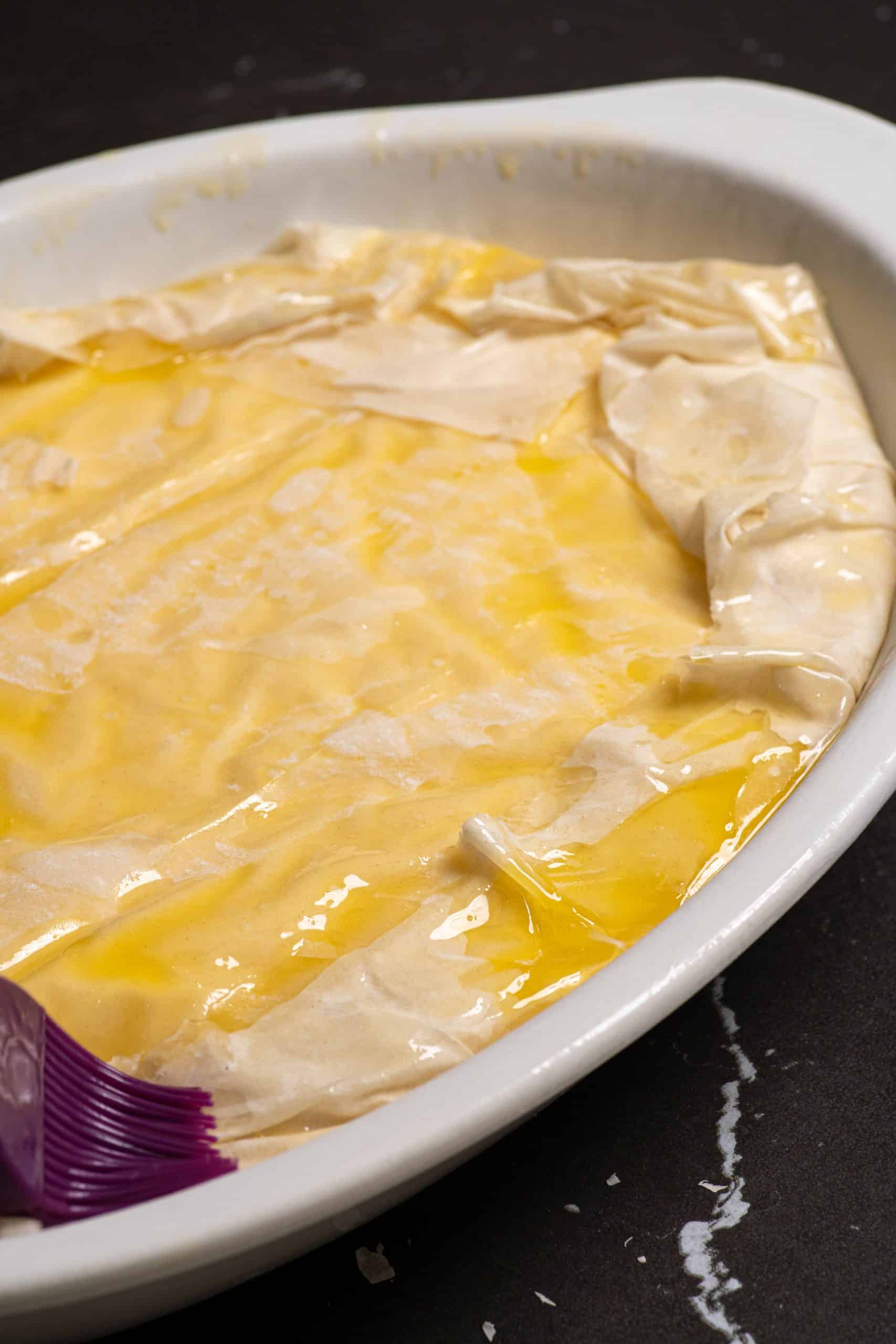
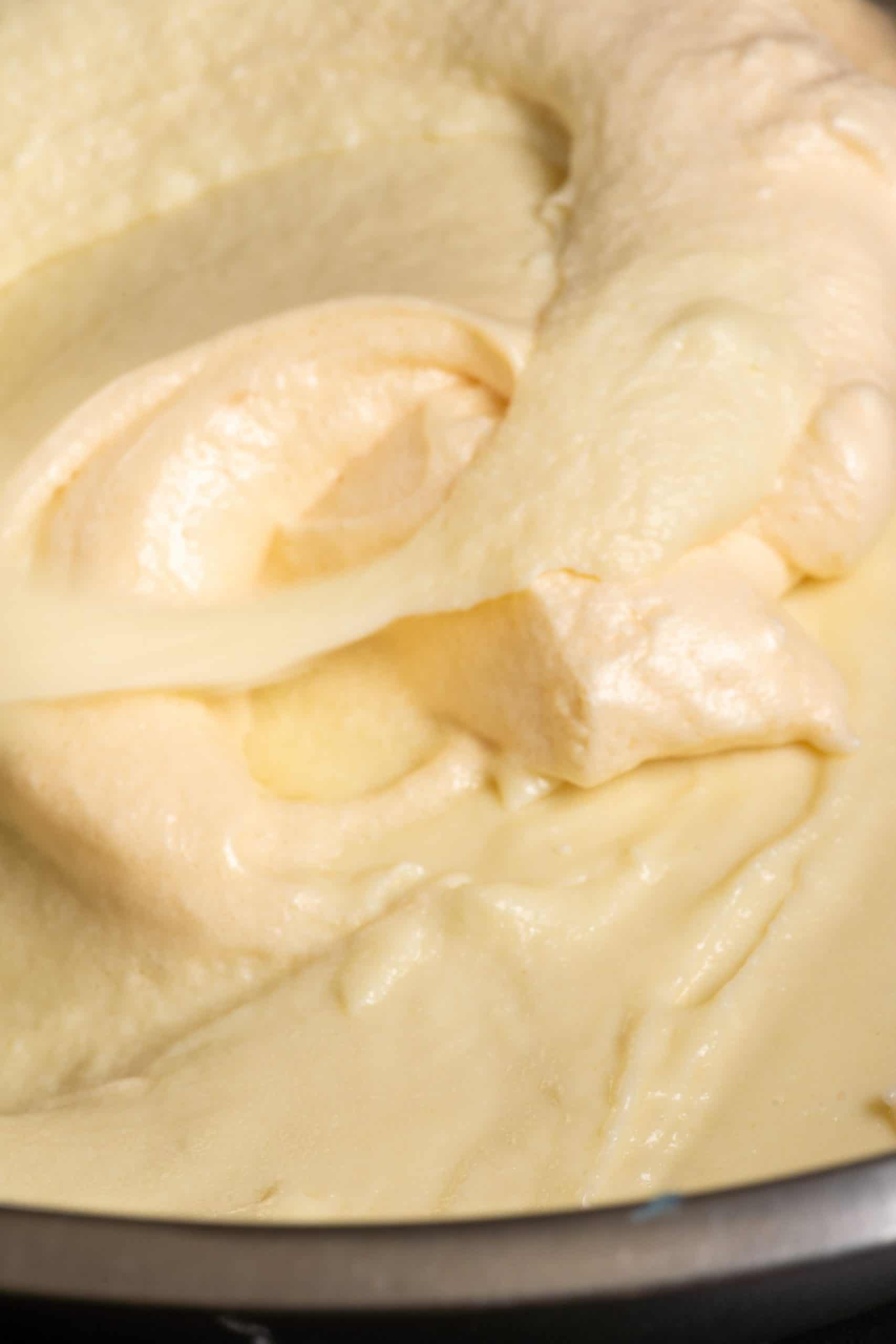
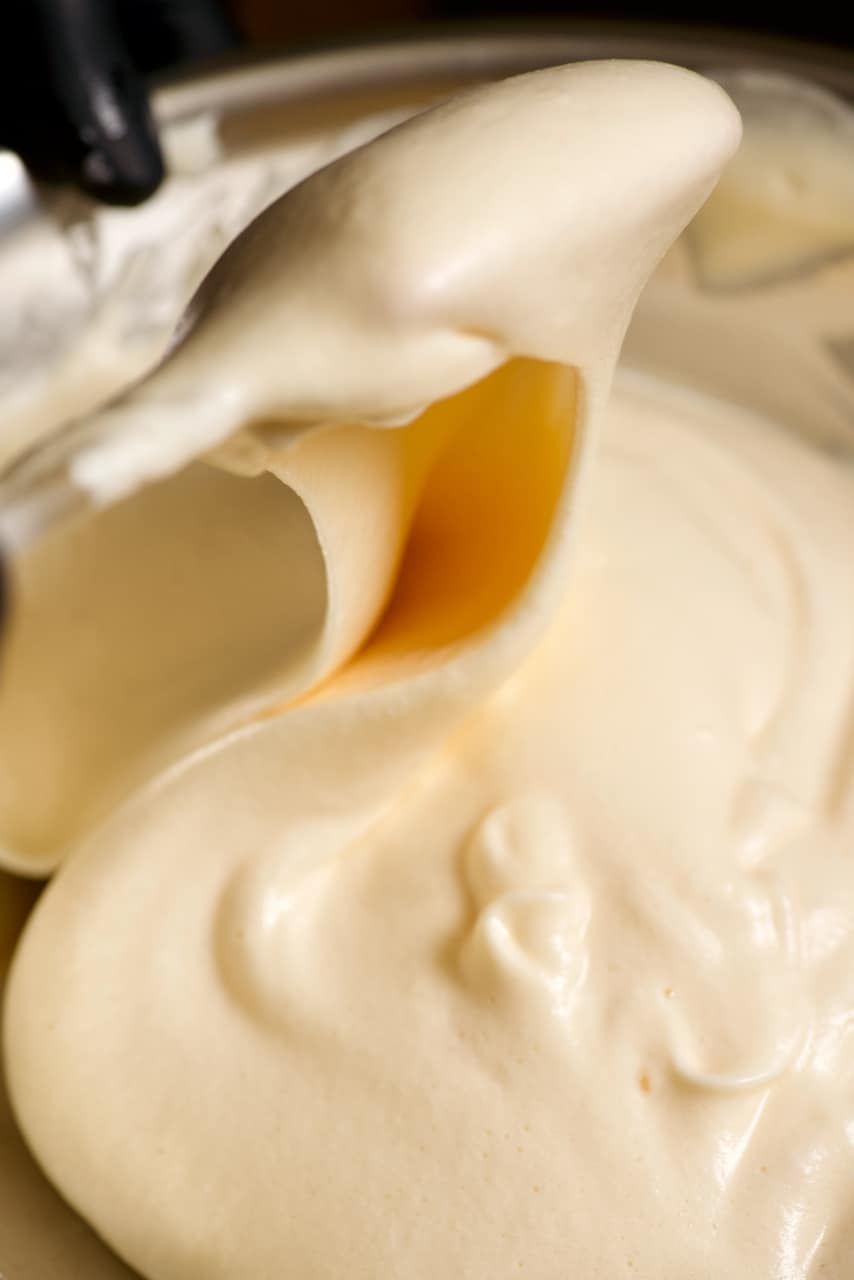
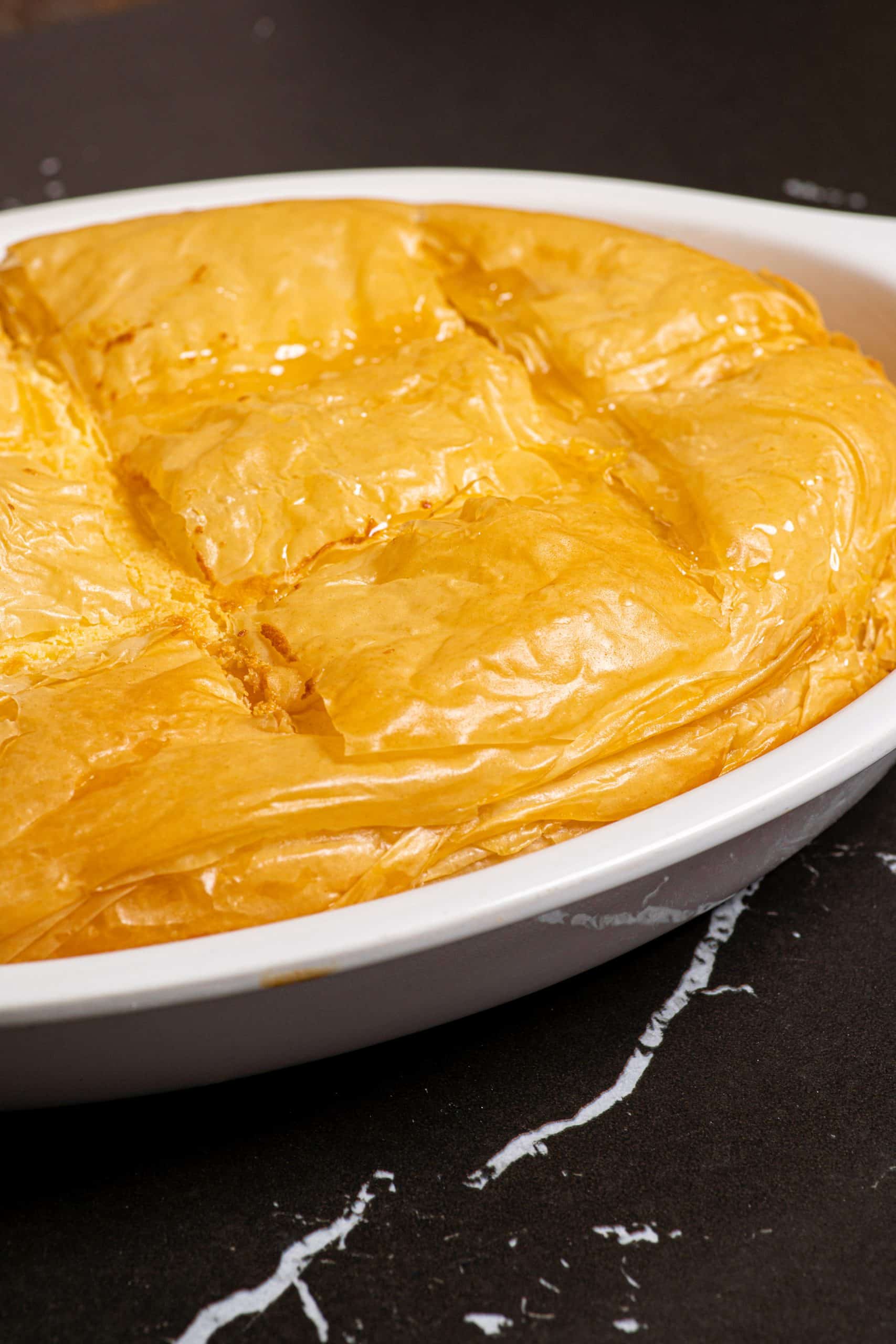
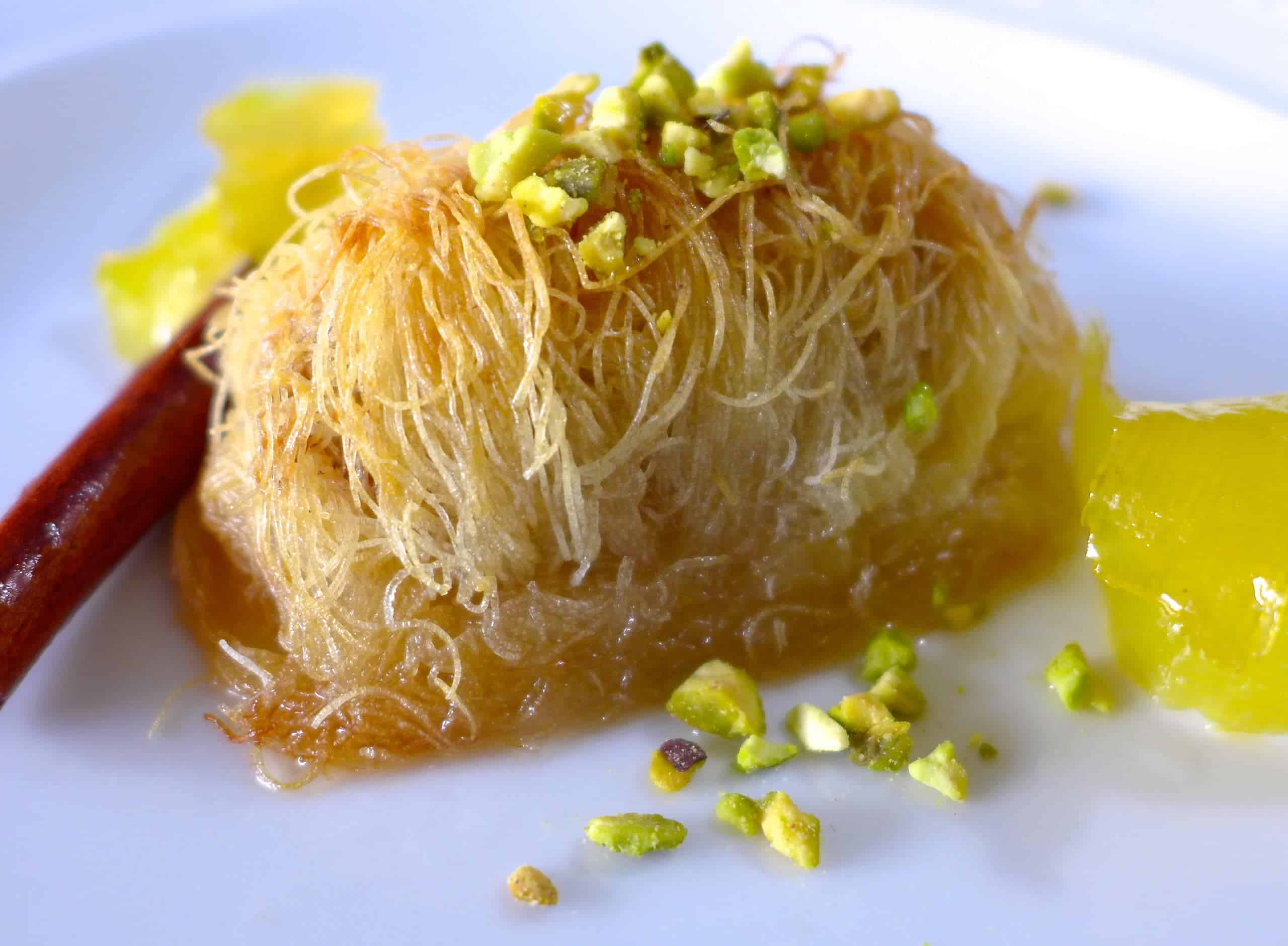
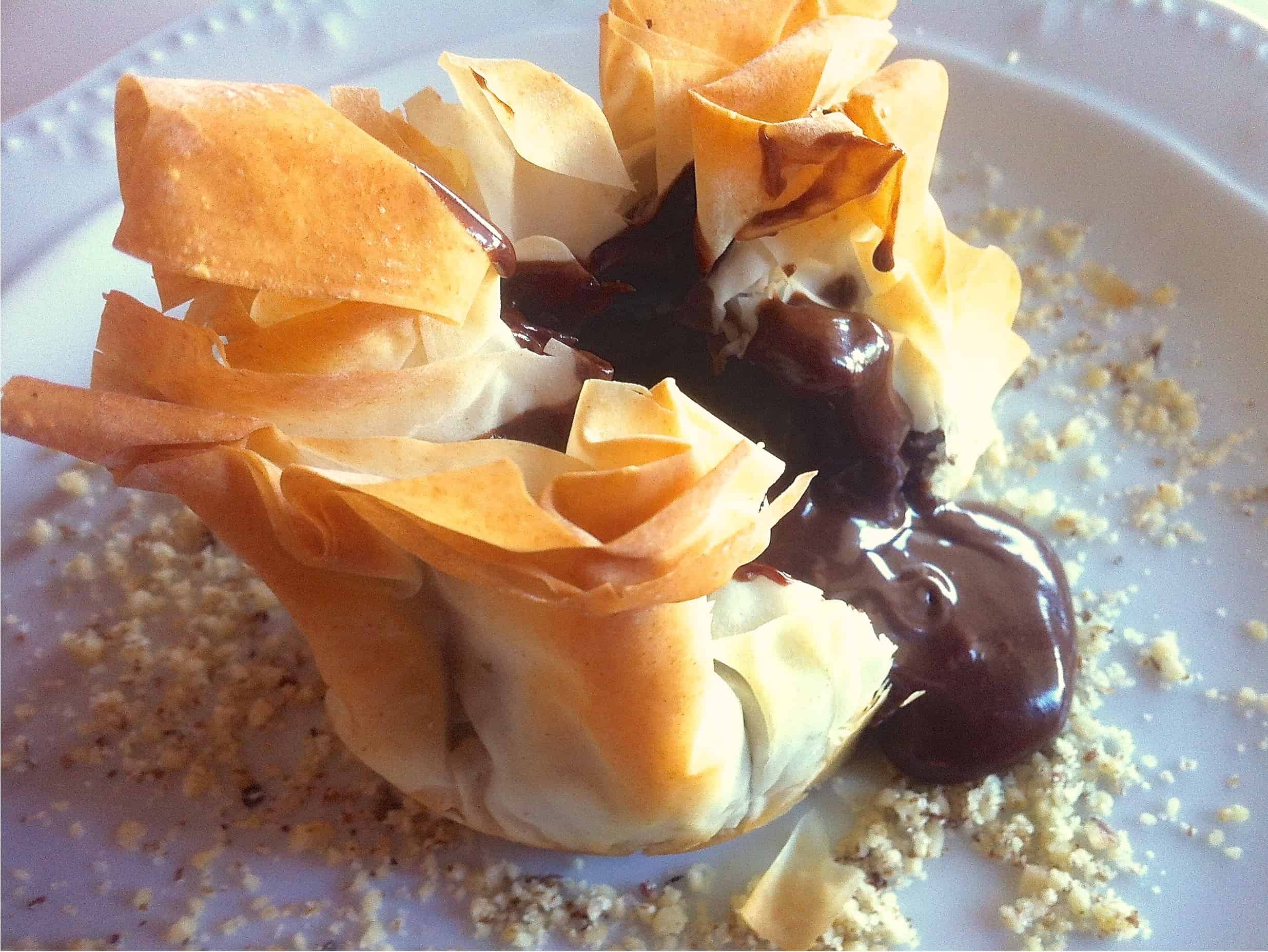
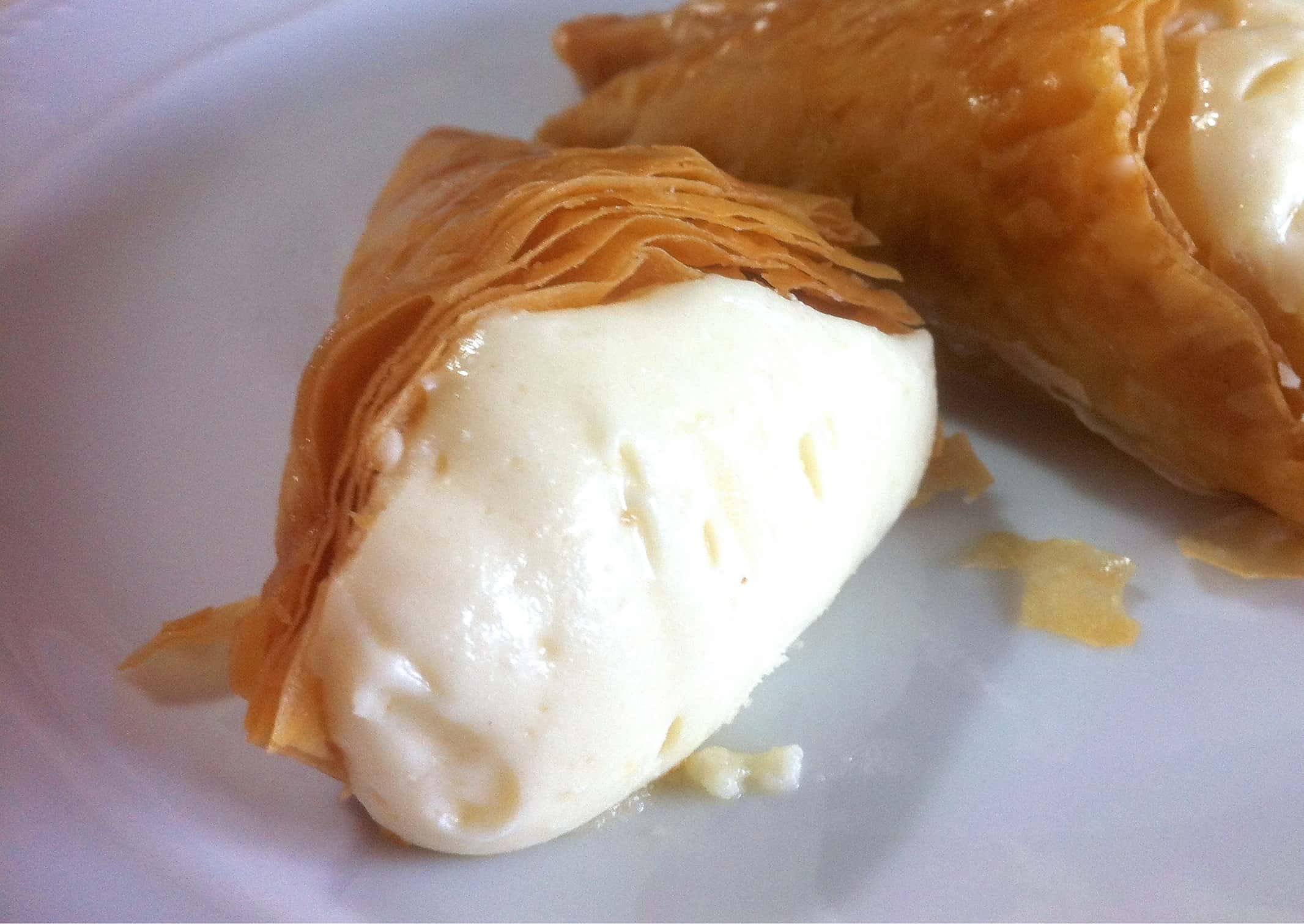
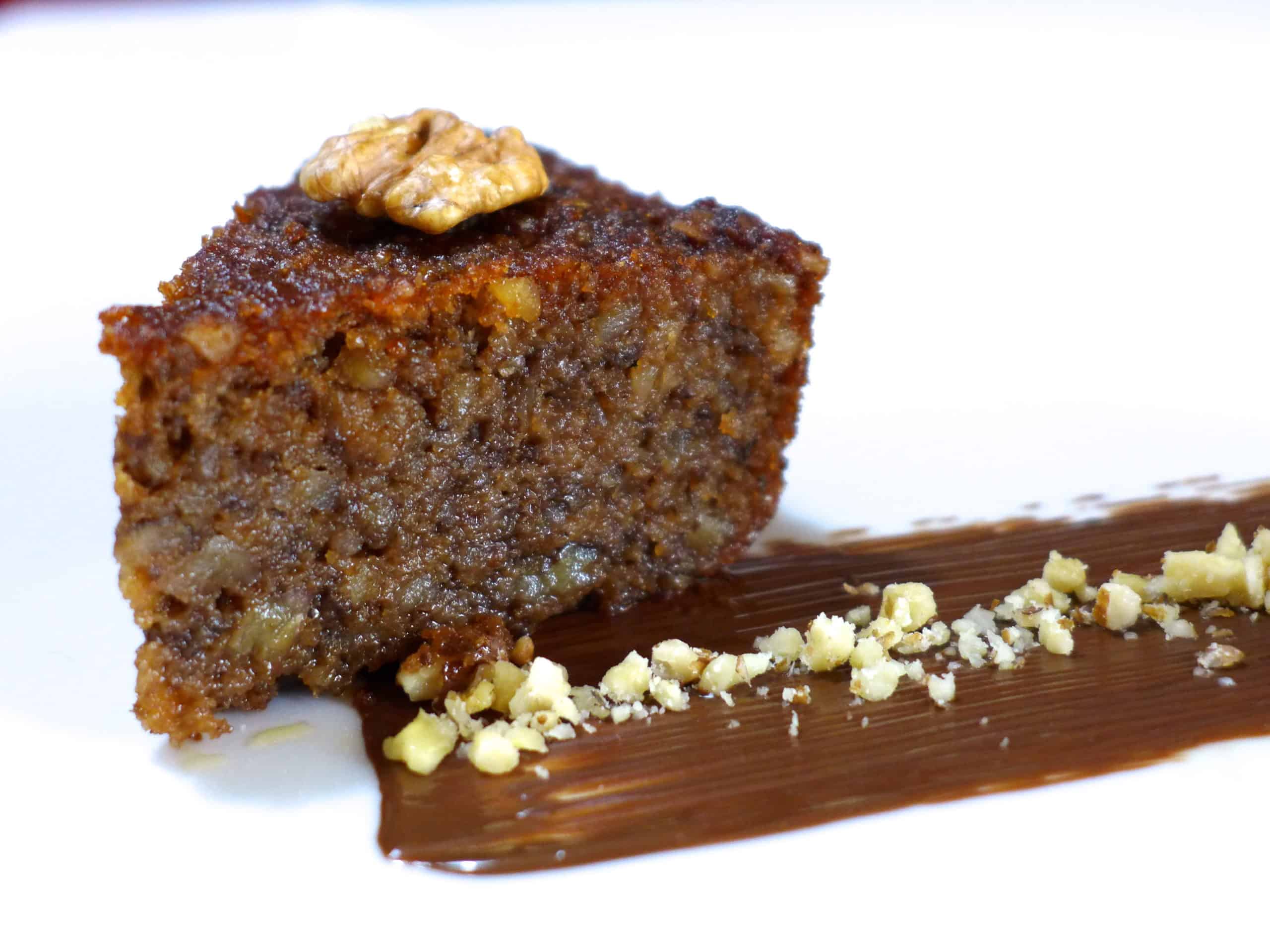
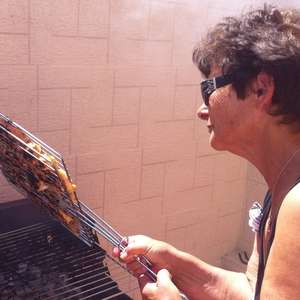
Please clarify. Hot syrup on cold galactoboureko or the other around? The last part of the recipe is mixed up, I think.
Hi Mark
It’s cold syrup over hot galaktoboureko, you need to prepare the syrup in the first step, let it cool completely and the moment the galaktoboureko is ready slowly ladle on top, while still hot.
Love
Eli
SO MUCH LOVE, Thank you for this Recipe Eli 🙂
Cold syrup on hot.
I have always been told cold syrup on cold galatobouriko or hot on hot 🙂
Hi Eli,
I want to try this recipe and at my Carrefour store I found 2 types of Semolina, one fine and one coarse.
Which one should I use?
thanks from Tirana
Hi Nevila
You should get the fine semolina, as the coarse one will cause the milk pie to get lumpy. Let us know how you got on 🙂
Love
Eli
thanks Eli,
I took the fine one.
I will let you know how it will turn out 🙂
thnx
Hi Eli,
I did this recipe on Sunday. Well, I hope to find a slice left over when I’m back home from work.
Everyone liked it.
Thnx a lot
Nevila
Nevila
So glad it turned out to be a hit 🙂 Hope you find many more recipes that you enjoy!
Love
Eli
Yes., already have tried a few ( like cheese balls, tomato fritters)
thnx a lot
Hey Eli,
I am from Australia and I am just wondering what milk cream is? Is it just normal thickened cream?
Thanks 🙂
Hi Tim
I’ve updated the recipe – its single cream, hope that helps 🙂
Eli
What is “single cream”. Is it like half and half? Please clarify. Thank you
How many cups in 500g of milk?????
metric measurements for liquids are usually in cups, never measured liquids ingredients in grams
How do you freeze it? Before baking,after baking. With or without syrup. Thank you
Hey Eli 🙂 it did thank you very much for your help!!
Hey Tim
I want to make this for my class at high school. Does it need to be served warm? Or can I make it the day before and serve it cold?
No its perfect when served cold! I personally love it the day after (and its good for a week or so after as well), with some delicious vanilla ice cream!
Hope you enjoy making it and of course eating it 🙂
Love
Eli
I mean Eli.
Hi, I made this as per the recipe. It was perfect. Even better than my Greek mother- in-law!!! Thanks for all the great tips
Ah so glad it worked out well Jennifer! And even happier that it turned out better than your mother in laws 😉
I thought the semolina pudding was very thick even after adding the fluffed eggs. Coming out of the oven in 5 minutes. Looks good!
Hi.
What happened if i use pasta flora instead of fillo? Thank you
Hm I dont think that would work, cause the suryp would soak right through the more pourous dough. But its always worth a shot I suppose 🙂
Hi, happy new year to all!
I live in the UK, where can I find phyllo pastry, I know in Greece they use phyllo kroustas, isit ok to use puff pastry?thank u, xx
Sofia here is a link to a UK filo (phyllo)
Jus Rol 6 Filo Pastry Sheets 270G
I really wanted to make this for a project, but I need Ancient Greece history behind galaktoboureko..please help?
My poor Greek husband is diabetic and LOVES Galaktoboureko. I was thinking to try your recipe and trying to cut the fat and make with no sugar. I am going to try Stevia instead of sugar, to use more egg whites and less yolks, to try butter-flavoured Pam spray (spray “oil”), and 1% evaporated milk instead of cream. Any other ideas out there for successful substitutions?
I think if you change the recipe then it won’t be the same at all. You need the sugar for sure. The butter is what gives the phyllo dough the crispness. I suggest you try it out first the way its intended and then try some adjustments. I really don’t think you’re way will work.
Did you ever try it with the stevia?
My first time doing this recipe. I would maybe try stevia in the syrup if he likes stevia. I cut my sugar in pudding to 2/3 and it still has good consistency. I may try to cut pudding sugar in half next time but in the end I just try to share what I make(less left in home) and cut smaller portions.
Also sometimes when I use filo I paint with olive oil and no one notices or complains 😉 eggs are good for you I wouldn’t adjust that part.
why can’t I print this recipe??? Can I use farina ?? and do I change the amount of farina??
Yes, both farina or semolina will work. If you look at other galaktoboureko recipes, most specify to use either one or the other. I think the farina will make the custard a little smoother, so you might even prefer that substitution.
Thanks! This is my favorite Greek pastry. I’m going to make this whenever I have the time 🙂
A truly delectable amazing Galaktoboureko. I really appreciate all the secret tips for success. This recipe is wonderful and not as sweet as some others. The honey and cinnamon syrup just give it that unique Greek flavour and my family ask for this time and time again. Thank you!!!!
This was a HUGE hit. I decided to make individual portions in small jars for a dinner party.
I put a large square at the bottom and up the sides and a round on top. I didn’t account for how much they would puff up (/souffle) and should have done them in a taller jar, or like the recipe said, make the bottom layer overhang so it could wrap over the top and hold it in! But all in all, it turned out quite well. They settled back down when they came out of the oven, and aside from a tiny bit of custard on the edges, there was enough space for the syrup to soak into it.
They probably only took 30 min, as an FYI for anyone tried to make mini ones!
Can the recipe be halved to make a smaller Galaktoboureko or would it not work?
Hi Winny,
Not quite. In the UK single cream is legally defined as having 18% butterfat content. As I understand it, in the US half and half can be up to 18% butterfat (but as little as 10%) and light cream is 18-30% – I think I’d pick light cream for this. Canadian half-and-half has less butterfat, so you’d go for table cream, which is the equivalent of single.
I tried this recipe and there are a couple of things I’d do differently, however I’d appreciate any tips as it’s my first time and I’m no expert, there may be reasons the recipe came out this way.
– The syrup seemed WAY too much, I only used half of it (any more and the tray would have over-filled) and it was still VERY sweet
– Given how sweet the overall dish was, I would probably not put extra sugar in the milk, just in the egg whites, and egg yolks
– The milk/semolina mix got really thick really quickly to the point where it was difficult to handle so I’d probably put a bit less semolina next time. I put the galaktaboureko in the fridge later on and it’s now really dense, and not soft and creamy how I like it.
– I’ll probably use a few more layers of the filo pastry next time.
Hi Michelle, I am not sure if you have tried any of the suggestions you made, but a few things to note…
*Syrup lasts for months, so it is easy to make it and leave in a jar in the pantry until the next time.
*In terms of the sweetness and reducing sugar, be careful with adjusting. The sugar has a “function” when used with both the egg white and yolk, so removing it will impact the texture of the custard. However, you may be able to slightly reduce the sugar in the other parts of the recipe (step 6) with less impact.
Following my first entry I just realised for the syrup it says 800g sugar to only 450ml water! Surely this can’t be right? More sugar than water? That would explain the crystallised effect on the pastry?
I used tapioca flour and mine came out with a great consistency. It’s extremely difficult to find semolina here in North Carolina.
Inai para polu Orea. Euxaristo. Absolutely marvellous.
Absolutely outstandingly perfect dessert, very impressive! Thanks 🙂 …looking forward to trying some other amazing greek dishes 😛
Made it last Sunday following the recipe as it is. Two days later only one piece left and I think that says everything! I only have to question the amount of syrup but after using it at the end, I had to take some out. However, following the steps, no eggy smell, lamps or runny custard, just a delicious home made sweet dish reminding me home. Thank you for the recipe, excellent!
I am at a loss. Solids normally have a mass (kilograms, grams, ounces, etc.) and fluids have a volume (litres, millilitres, cups, teaspoons, etc).
500 grams of milk and a similar description of water make no sense. Can you kindly clarify this Eli.
Thanks.
Both solids and liquids have both mass and volume 🙂 To convert from one to the other you would need to know the density of the substance [https://en.wikipedia.org/wiki/Density].
For water, it’s easy: 1g = 1ml, and many liquids (including milk) can be safely approximated to that. So 500g = 500ml = about 2 cups. Now, the cup measure is actually less clear: US cups and Imperial cups are not the same…
If you’re already weighing your solid ingredients, why wouldn’t you weigh your liquids too? Presumably you have a scale for former; use it for the latter.
Eli, Please list the USA conversion of the ingredients. Others have also asked.. What is Single Cream? What would be the USA equivalent? As others have asked.. What is knob of butter? Thank you.
Perimenoume..
Eli, Please list the USA conversion of the ingredients. Others have also asked.. What is Single Cream? What would be the USA equivalent? As others have asked.. What is knob of butter? Thank you.
Perimenoume..
Best galaktoboureko recipe….EVER. It was gone in a matter of minutes and everyone asking for more. So easy to make and the cooking tips worked a treat. Eli thanks so much for sharing… this is definitely a household favourite in this aussie family.
Made this for the first time a few days ago. Absolutely fantastic result! Everybody loved it. There is a lot of syrup, but after a day or two it seems ok! It’s nearly all gone now anyway! Great instructions but I nearly put too much sugar in the custard mixture as I was not subtracting the 50g in egg whites and 50g in egg whites from the 270g total for the custard.. phew. I also just approximated 1ml =1g for the milk and the single cream I used – seemed to work perfectly! Thanks so much for this recipe!
Eli,
Wow! Spectacular. For a minute there I thought I was back on Hydra! Outstanding recipe. Thank you for your great attention to detail.
I’m an Australian chick, with cooking skilled pretty limited to toast, BBQ’s and 2 min noodles.
I made this for my Greek friend… and she said it was the best she’s ever had!!! Your steps were easy… and your pre notes with tips were awesome. Now I can’t stop making it…and I’m turning a little chubby.
What type of milk do you use? Full fat, semi smkimmed or skimmed? Im guessing full fat to go with the large amount of sugar used 🙂
I made this and pastry and syrup cane out lovely but the custard was grainy like lumpy ?? Can you advise where I went wrong . I have made this dessert twice different recipes and both cane out ok and that was with coarse semolina . I tried fine but something didn’t go well ??
It was good but it just had way too much sugar!! There are more than 4 cups of sugar in this tiny galaktoboureko and I didn’t even use the full amount of sugar, but it was just way too much for me. The galaktoboureko at my local Greek festival was much more subtly sweet. But it is a good recipe. Just not for me!
İnteresting to see, you add cold syrup on hot boureko.
We pour hot syrup (not boiling) on still warm boureko, as it is best served when the galakto boureko is still warm and crispy(this is when syrup is poured hot).
This is how we do it in eastern black sea today ????
what size pan in inches would this be?? your picture does NOT look like a large “tray”….
I’m debating using a 7″ x 11″ baking dish or would it be more like a 9″ x 13” baking dish???
Hi Jeanne! I’m so sorry that I missed your message. I would go with 9″ x 13″ baking pan or baking dish. I used an oval shaped baking dish so it’s difficult do be exact. But a 9″x 13″ baking will work great!
This recipe is better than my moms!
Way creamier and not as dense. Knowing Greek desserts, I cut down on the sugar and it was perfect!
Hi Joanna! Really glad you liked it! Did you cut down on the total amount of syrup or the sugar in the custard? Also what size baking dish did you use?
I’ve made decent galaktoboureko over the years, but this recipe received unprecedented rave reviews, even from some people who claim galaktoboureko isn’t usually a favourite. The secret must be the cream (rather than using milk)…in any case, I am definitely using your recipe going forward! Perfect!
Efrosini thank you so much for your amazing feedback! Indeed the cream does give it an amazing flavour and texture! So glad you loved it!
Loved it. So quintessentially Greek. Shared it with the neighbours !
Hi. I’m confused about the layering it “horizontally” and “vertically”. Can you please verify? Thank you.
Hi Susan
I mean to layer a few sheets lengthwise and a few sheets width wise. Most Phyllo sheets don’t fill a baking tray so you need to layer them that way in order to have an even layer of phyllo across all sides of your baking tray.
The recipe is not clear of how much cream and milk you use. It says 500g milk and 500g cream.
Also, it doesn’t say to mix sugar with the egg yolks. How much sugar do you mix with the egg yolks?
Hey Lana, I think your answer is on step 3-4-5? 220g sugar split three ways in 120g, 50g and 50g and mixed with the ingredients in steps 3,4 &5.
Hi Eli, thanks for the step by step recipe. This is my first time trying to make any greek sweet, but it is my dads favourite so I am giving it a go for his birthday. I was just wondering how best to store it until tomorrow? Thanks in advance
Can galatoboureko be frozen and baked latter. If so Do I score it before freezing ..
Hi, I’ve just made this, its in the oven now. I use to get this with my sandwich for lunch from Greek people. His mother made it and it was heavenly Cold!!! I hope this is like hers, hot and cold, lol.
HI, I have made this recipe so many times. My husband loves it.
I can tell you it never lasts a week, it’s gone in two days if I am lucky.
I also changed one thing when I didn’t have cream on hand. I used kefir instead of cream, it curdles into cheese, which turned out great. It taste like a cheese cake version of Galaktoboureko. You should try it..
In Cyprus where I first tried galaktoboureko there were 2 varieties depending on which bakery you visited. One was flavoured with rose water the other with orange water both were absolutely gorgeous. The dish I found in Crete and Rhodes was baked in a different manner and not to my taste quite as nice as the Cypriot version with rosewater. I would not be able to refuse a slice of this delicacy wherever it was made.
Mine came our grainy, but the flavour was perfect. What did I do wrong?
TURKISH name and Turkish Desert ! Stealing as Usual ! It is called LAZ Boregi ! This desert is originated from eastern Black sea region of Turkiye ! Please show respect to other cultures! Thanks
What a ridiculous comment to see on this website. There was no “disrespect” to your Turkish culture in posting a recipe for what has also been a traditional dessert in Greece. At what point did the author claim that this type of dessert was exclusive to Greece? I am an American with mixed heritage. Next, you’ll be accusing me of cultural appropriation for daring to make this “Turkish” dessert. Just be loving and kind.
I live in crete and I use your site several times a week. I always want to thank you but I have 2 small children so I rarely have time! I’m making this recipe for the second time, the first time was so great and this one is in the oven and looks just as good so far.
We have a goat and she makes a lot of milk, so when we have a surplus I’ve been told this is the go to recipe! I’ll just have to get someone in the village to try my galaktoboureko and check it’s up to scratch!
Thank you for this recipe and all the others, I have learned so much. Charlotte x x x
Whats double cream in ur perspective? Because I’ve done this recipe twice and both times have come out not that creamy forcing me to add more milk and I think it’s got to do with the cream
It’s 40-45% or so fat content. For the US you can use heavy cream.
I made this recipe and it was delicious. I have two minor suggestions to make to the recipe Ingredients section. I would add the word “divided” after “220g sugar (7.5 oz.)” and add “Water of sprinkling”, perhaps under the BASE INGREDIENTS section.
Although I followed the recipe I can see how the addition of rose or orange blossom water would add another dimension to the taste.
Hi Eli,
I have made this two times. It’s absolutely delicious. It is well worth the effort.
I would note that I wouldn’t call this recipe easy. It’s not difficult, but there are many steps. Time and patience is required for this recipe.
I will have to try other recipes. I really enjoy Greek Food and there aren’t any good Greek Restaurants in the area where I live.
Hi, I made this as per the recipe. It was perfect. I was lucky enough to have all the ingredient at my door step by DeliverCart. if you are in Birmingham must try them.
https://delivercart.co.uk/
I didn’t have Semolina so just used all purpose flour. I even doubled the recipe and both came out DELICIOUS!